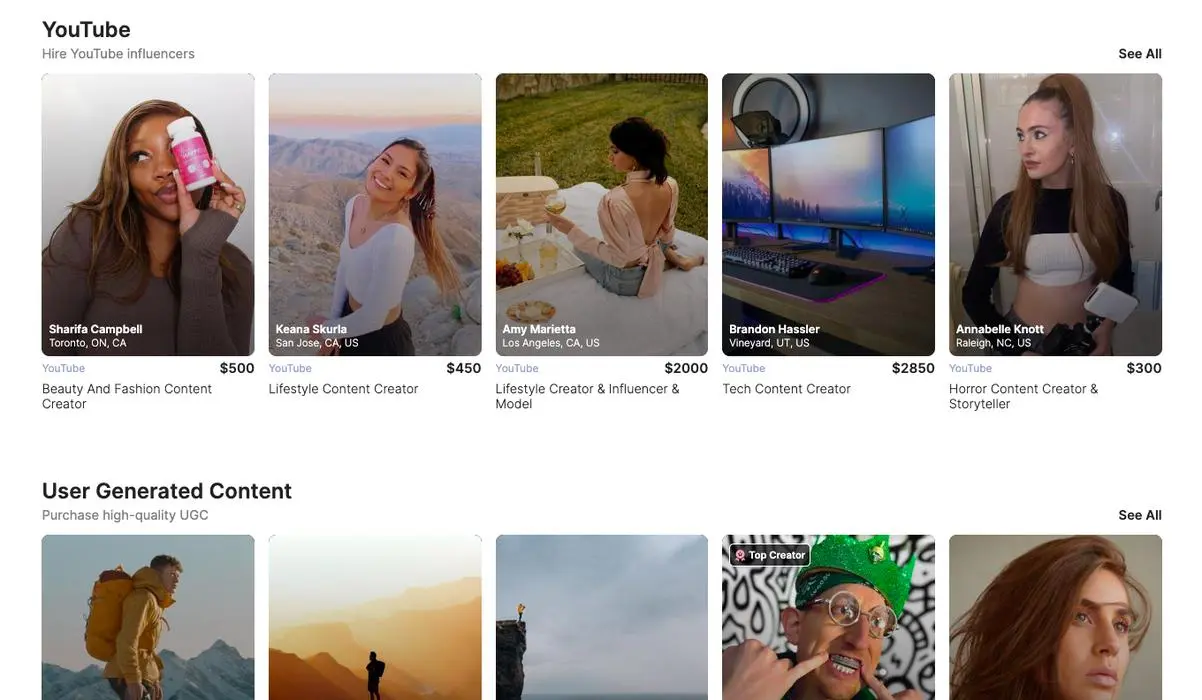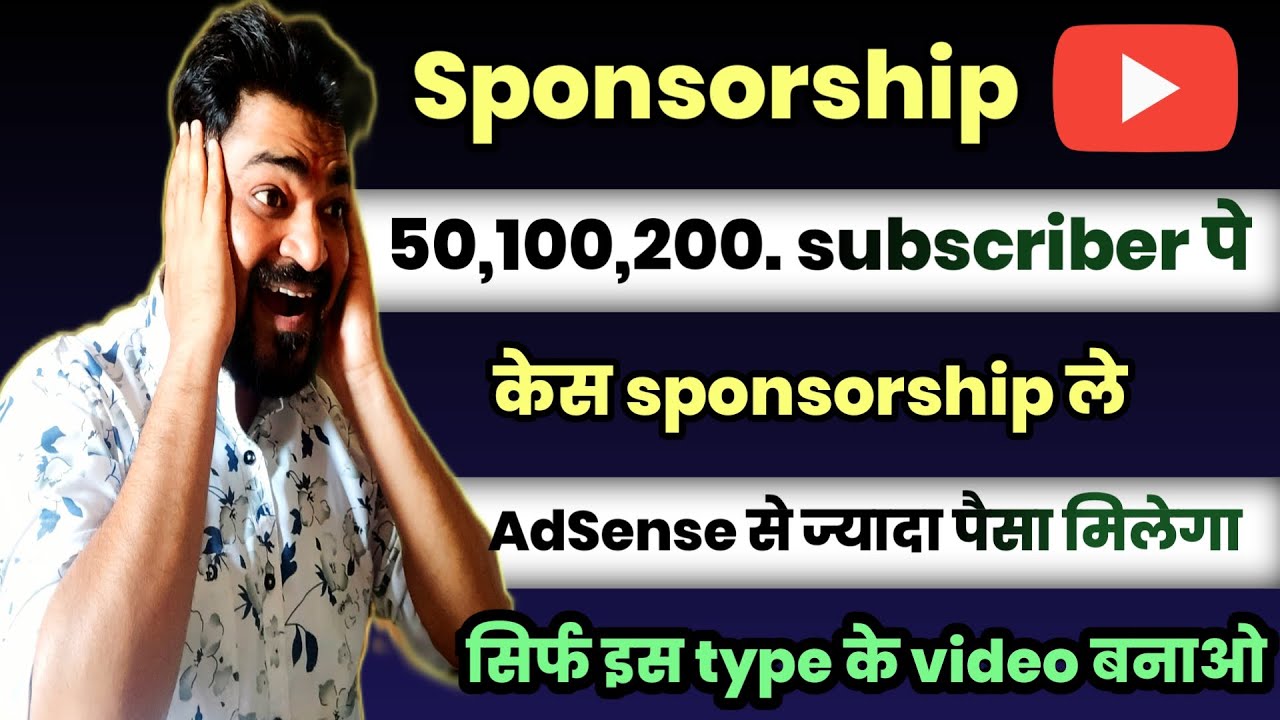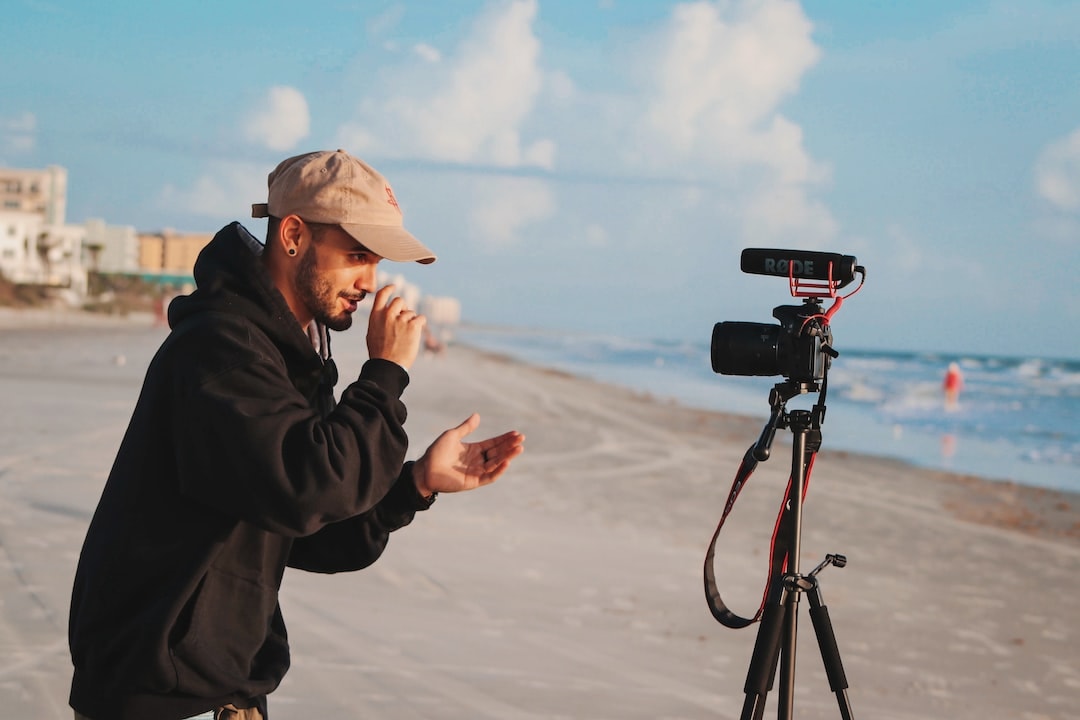So, you've probably heard about YouTube sponsorships buzzing around, and you might be curious about what it really means for content creators. Well, you're in the right place! Sponsorships on YouTube are essentially a partnership between a brand and a creator where the brand pays the creator to promote its products or services in their videos. This kind of collaboration can offer fantastic opportunities for both parties involved. For creators, it's a way to monetize their passion and connect with brands that align with their content and audience. For brands, it’s a golden chance to tap into a specific, engaged market through authentic content. Let's dive deeper!
The Types of Brand Partnerships on YouTube

When it comes to brand partnerships on YouTube, there's a smorgasbord of options available! Each type serves different purposes and can cater to various needs, whether you’re a big-shot YouTuber or a growing channel. Here are some popular types:
- Product Placement: This happens when a creator includes a brand’s product within their content, integrating it naturally. Think of your favorite influencer casually sipping on a specific energy drink during their vlog—that’s product placement!
- Sponsored Content: In this case, a creator produces a video that revolves around the brand's product or service. This can be how-to videos, reviews, or even unboxings. The creator gets paid to cover the content while still maintaining their unique style.
- Ambassador Programs: Brands often seek long-term relationships with creators, making them brand ambassadors. These arrangements may involve multiple campaigns over a defined period, frequently with perks such as exclusive products or commission on sales.
- Affiliate Marketing: Here, creators promote products and earn commissions on sales generated through their unique referral links. It's a win-win, as creators can earn varying amounts based on their audience's response!
- Giveaways and Promotions: Brands may sponsor giveaways through creators, letting them host contests where followers can win products, all while boosting brand visibility and follower engagement.
Understanding these various types of brand partnerships helps YouTubers make informed choices that align with their brand and audience. It's all about creating authentic connections that benefit both the creator and the sponsor!
Also Read This: How to Add Music to Your YouTube Video
Factors Influencing Sponsorship Payments

When it comes to sponsorship payments for YouTubers, several factors come into play, all of which can significantly influence the amount a creator can charge brands. Understanding these factors will not only help YouTubers negotiate better deals but also give brands insight into what they should expect when collaborating.
Here are the primary factors that can affect sponsorship payments:
- Audience Size: The number of subscribers and views on a YouTuber's channel plays a vital role. Generally, the more significant the audience, the higher the potential sponsorship payment.
- Engagement Rate: This refers to how actively the audience interacts with the content, including likes, comments, and shares. A high engagement rate indicates a loyal following, which can drive up sponsorship rates.
- Content Niche: Certain niches, like tech or beauty, may attract higher sponsorship payments due to their lucrative markets. Brands are willing to invest more in influencers in popular niches than in more niche or less competitive categories.
- Brand Alignment: How well a YouTuber's content aligns with a brand can affect sponsorship rates. If a YouTuber's audience perfectly matches a brand's target demographic, that alignment can result in higher payments.
- Production Quality: The quality of the videos, including editing, visuals, and sound, can also factor in. High-quality content can make a channel more appealing to potential sponsors, justifying higher rates.
In short, YouTubers need to consider these factors when assessing their worth as influencers to brands. It's all about finding the right balance between content quality, audience metrics, and brand partnerships!
Also Read This: Making Images into a Spectrogram
Average Payment Rates for YouTubers

Understanding the average payment rates for YouTubers can be quite illuminating, especially for those considering entering the world of brand collaborations. While there’s no one-size-fits-all figure, there are some general benchmarks in the industry based on a variety of factors.
Here’s a brief breakdown of typical payment ranges:
| Subscribers | Average Payment Per Video |
|---|---|
| Less than 1,000 | $50 - $150 |
| 1,000 - 10,000 | $100 - $1,000 |
| 10,000 - 100,000 | $500 - $5,000 |
| 100,000 - 1,000,000 | $2,500 - $25,000 |
| Over 1,000,000 | $10,000+ |
As you can see, payment rates can vary widely based on subscriber count alone. However, it’s important to keep in mind that other metrics, like engagement and niche, also impact these figures.
For example, some micro-influencers (channels with fewer than 100,000 subscribers) can command fair rates if their audience is highly engaged or aligns well with specific brand goals. Additionally, YouTubers often receive payments per video, though some may negotiate long-term partnerships for ongoing content, which could yield different payment structures.
In conclusion, while there are average payment rates to consider, it’s best for YouTubers to assess their unique situation, audience, and content type when determining what to charge for sponsorships!
Also Read This: How to Make an Image 1024 by 576 Pixels
5. Negotiating Sponsorship Deals

Negotiating sponsorship deals might seem daunting, but with the right approach, it can be a rewarding experience for both YouTubers and brands. First things first, it's essential to understand your value as a creator. Consider your audience size, engagement metrics, and niche relevance. Here’s how to step into the negotiation arena confidently:
- Know Your Worth: Use analytics tools to gather data on viewer behavior, demographics, and engagement rates. This information helps you establish a baseline for your sponsorship fees.
- Establish Clear Objectives: Before you enter into discussions, determine what you aim to achieve from this collaboration. Whether it's monetary compensation, free products, or exposure, be clear about your goals.
- Be Open to Different Formats: Not every sponsorship needs to be a traditional advertisement. Consider other formats like product placements, shout-outs, or exclusive content.
- Negotiate Terms Wisely: Don’t just focus on the dollar amount. Discuss deliverables, timelines, creative control, and usage rights. A clear agreement protects both parties involved.
- Document Everything: Once you’ve finalized the terms, ensure that everything is in writing—this includes agreements on pricing, timelines, and expectations.
At the end of the day, successful negotiations rest on effective communication and a mutual understanding of what both parties stand to gain. Always aim for a win-win situation!
Also Read This: Using Getty Images Images on YouTube: Guidelines for Incorporating Copyrighted Content
6. Best Practices for Working with Sponsors
Once the deal is sealed, it’s time to collaborate effectively with your sponsors. Establishing a healthy working relationship can enhance not only your project outcomes but also future collaborations. Here are some best practices to keep in mind:
- Set Clear Expectations: At the onset of your collaboration, have an open conversation about what both you and the sponsor expect. This eliminates any ambiguity later on.
- Maintain Open Communication: Regular updates and check-ins can help address any concerns that might arise during production. Keeping the lines of communication open builds trust.
- Stick to Your Style: While it’s important to align with the brand’s messaging, you should maintain your unique voice. Authenticity resonates well with your audience, so find a balance.
- Deliver on Time: Meeting deadlines is crucial in the realm of sponsorships. It reflects professionalism and reliability, essential qualities in building lasting partnerships.
- Seek Feedback: After the collaboration ends, seek feedback from the sponsor. This shows that you value their opinion and are committed to improving your future projects.
In summary, cultivating a collaborative spirit and maintaining professionalism in your dealings with sponsors can lead to fruitful relationships that benefit everyone involved.
Also Read This: Resizing Images in Paint: A Quick Guide
7. Case Studies of Successful Brand Collaborations
Exploring successful brand collaborations can provide invaluable insights for both YouTubers and brands looking to make an impact. Let's delve into some remarkable case studies that highlight how effective sponsorship payments and partnerships can lead to mutual success!
1. MKBHD and OnePlus
Marques Brownlee, or MKBHD, is a prominent tech YouTuber known for his in-depth gadget reviews. His collaboration with OnePlus led to a significant uptick in traffic for both parties. MKBHD produced engaging content that showcased OnePlus's new products while maintaining his authentic voice. The partnership not only highlighted the product's features but also captured the interest of tech enthusiasts, shaping the perception of the OnePlus brand.
2. Zoella and the Zoella Beauty Line
British YouTuber Zoella, who began with beauty and lifestyle content, successfully launched her own beauty line. Her collaboration with brands such as Superdrug showcased her products, effectively combining her authentic reviews with promotional sponsorship. The collaboration flourished because her followers trusted her recommendations, driving sales and expanding her brand reach in the competitive beauty market.
3. Dude Perfect and Nerf
Dude Perfect, a sports entertainment group with a massive following, partnered with Nerf for a series of entertaining challenge videos. The partnership creatively integrated Nerf products, showcasing them in action and engaging their audience while promoting the brand effectively. This collaboration led to a significant increase in both viewer engagement and brand recognition.
Each of these case studies serves as a testament to the power of authentic collaborations. By aligning brand values with the creators' content, both parties can achieve greater visibility, increased sales, and ultimately, successful brand partnerships.
8. Conclusion: The Future of Sponsorships in the YouTube Ecosystem
The landscape of sponsorships in the YouTube ecosystem is constantly evolving. As more creators enter the arena and audience preferences change, the way sponsorships are constructed and executed will shift as well. So, what does the future hold for sponsorship payments in the YouTube environment?
1. Increased Transparency
This ongoing trend towards transparency is likely to continue. Audiences appreciate honesty regarding sponsorships, and creators who disclose their partnerships can enhance trust and engagement.
2. More Diverse Sponsorship Models
Not every sponsorship model fits every creator. Expect to see more diverse approaches, including affiliate links, product placements, and performance-based payments. This flexibility will allow creators to choose partnerships that align best with their brand and audience.
3. Emphasis on Long-Term Partnerships
Brand collaborations could become more long-term, moving away from one-off campaigns to ongoing partnerships. This strategy can lead to deeper connections between brands and creators while providing steady revenue streams for YouTubers.
4. Enhanced Use of Data Analytics
As data analytics tools become more sophisticated, brands will seek to use data to gauge the effectiveness of campaigns. This could lead to more targeted sponsorships and improved ROI for both parties.
In summary, the future of sponsorships in the YouTube ecosystem appears bright, with ample opportunities for creators and brands to explore innovative ways to collaborate. By focusing on long-term relationships and authenticity, both sides can thrive in this dynamic digital landscape.
 admin
admin








